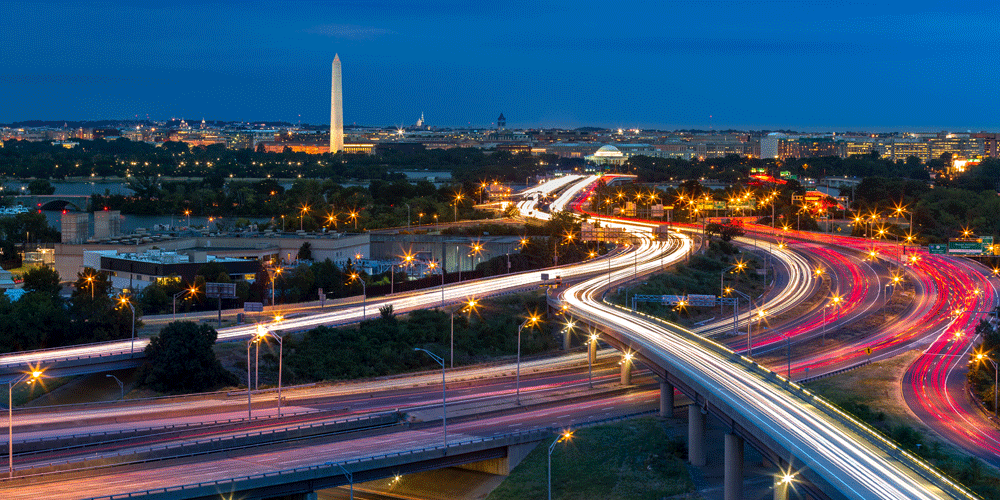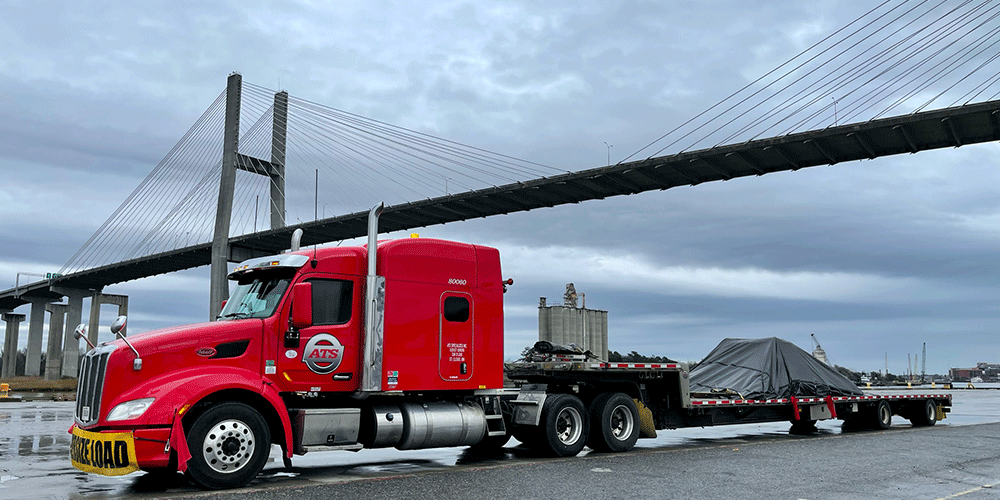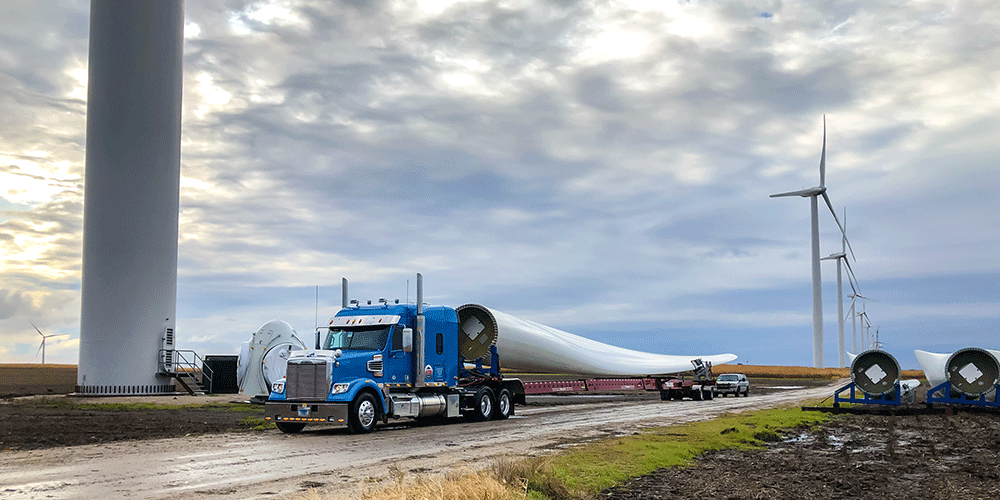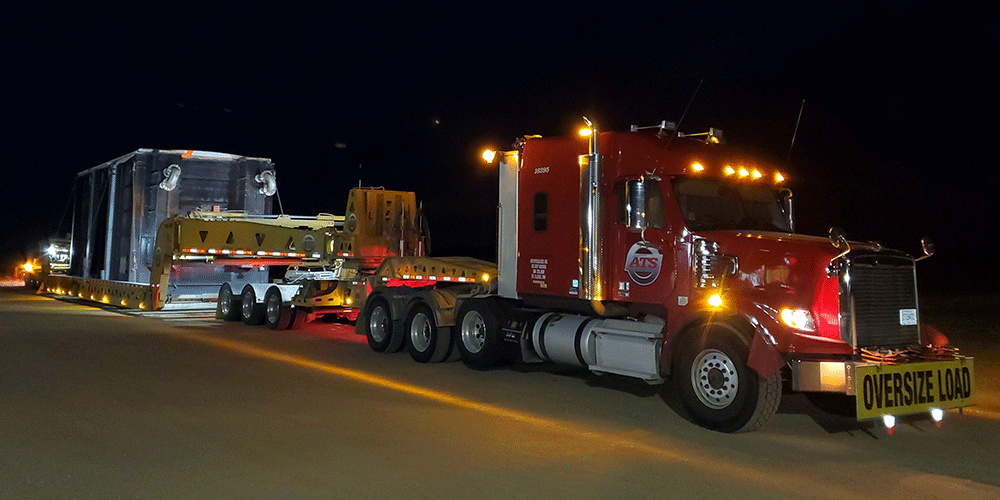
It feels like we’ve been hearing about it forever — but the U.S. Infrastructure Investment and Jobs Act was officially signed into law in mid-November.
Following months and months of speculation about what will be included and what it’ll mean for the transportation industry, we now have a better idea of what to expect in the coming years.
After more than 65 years in the trucking industry, we’ve seen several bills signed into law that have impacted our industry — some big and some not so big.
After all these years, we’ve learned how to decipher some complicated pieces of legislation and explain what they mean for our customers. We spent some time looking into this latest piece of legislation and have a pretty good idea of what the new act will mean for transportation.
In this article, we’ll dissect exactly what’s included in the infrastructure bill, what it means for the transportation industry in the immediate future and what you can expect to see long term. You’ll also have a better understanding of what you can do to prepare so you won’t be as negatively impacted by the changes in access to trucking capacity.
What’s Included in The New Infrastructure Bill?
While the infrastructure deal is one of the largest investments in the country’s history, it still doesn’t include much of what was on the original proposal. After the dust settled on months of negotiations, here’s what’s in the final version of the act, according to the White House:
- $55 billion for clean drinking water
This part will expand access to clean drinking water for households, businesses, schools and child care centers all across the country. The legislation will invest in water infrastructure and eliminate lead service pipes. - $65 billion for expanded broadband
The goal of this part of the act is to provide every American with access to high-speed internet through broadband infrastructure deployment. It will also lower the cost of internet access. - $110 billion for roads, bridges and major “transformational” projects
This is the largest investment in repairing and reconstructing bridges since the construction of the interstate highway system. It will rebuild the most economically significant bridges in the country as well as thousands of smaller bridges. The legislation also includes the first-ever Safe Streets and Roads for All program to support projects to reduce traffic fatalities. - $89.9 billion for public transit
The legislation will expand public transit options across every state in the country, replace thousands of deficient transit vehicles, including buses, with clean, zero-emission vehicles, and improve accessibility for the elderly and people with disabilities. - $17 billion for port infrastructure & $25 billion for airports
This part addresses repair and maintenance backlogs, reduces congestion and emissions near ports and airports, and drives electrification and other low-carbon technologies. - $66 billion for passenger rail
This aims to eliminate the Amtrak maintenance backlog, modernize the Northeast Corridor, and bring world-class rail service to areas outside the northeast and mid-Atlantic. - $7.5 billion for electric vehicle (EV) chargers
The legislation will provide funding for the deployment of EV chargers along highway corridors to facilitate long-distance travel and within communities to provide convenient charging where people live, work and shop. - $65 billion for clean energy
This funding will upgrade power infrastructure by building thousands of miles of new transmission lines to help the expansion of renewables and clean energy while lowering costs. - $50 billion for weatherization
This legislation aims to make communities safer and infrastructure more resilient to the impacts of climate change and cyber-attacks. The investment protects against droughts, heat, floods and wildfires, in addition to a major investment in weatherization. - $21 billion to clean up Superfund and brownfield sites
The bill will clean up Superfund and brownfield sites, reclaim abandoned mine land and cap orphaned oil and gas wells.
So while it’s not everything that was originally included, it’s still a lot. And some portions of the infrastructure act will impact the transportation industry more than others.

How Will The Infrastructure Plan Impact The Transportation Industry?
You’re probably thinking about how it’s already difficult to find a truck. How will this new infrastructure bill impact your ability to find a truck when you need one?
While all markets will be impacted to some degree, the level of impact will vary based on what industry you serve. Why all markets?
Picture it like the aftermath of a natural disaster. Many carriers and independent truck drivers sign up to deliver relief supplies — no matter what industry they typically serve. That makes it harder for you to find a truck — even if you’re not in the affected area.
While this won’t be so concentrated like disaster relief, many carriers will be looking to move freight for these projects — taking them away from you. Again, it won’t be quite to the extreme of disaster relief since these projects will likely last for years instead of months.
In fact, many of these projects likely won’t even start for several years. But that doesn’t mean you have time to sit around and wait. It’s still a good idea to plan ahead so you’re prepared when the time does come and trucks get harder to find.
Which Industries Will See The Biggest Impact From the Infrastructure Bill?
As we mentioned above, every industry will likely find it more difficult to find a truck when you need it. But if your business operates in any of the following markets, you’ll notice it more than others.
Construction
If you’re in the construction industry — or work with carriers that serve the construction industry — you can expect to be impacted by the infrastructure act.
From transporting new pipes to replace the old lead ones to the work on ports and airports to the road and bridgework, you can expect trucking equipment to be heavily used in the construction industry in virtually every aspect of the infrastructure bill.

Clean Energy
Since the act uses a broad brush when describing the funding going towards clean energy, you can expect disruptions if you use carriers that serve the wind, solar, geothermal and other clean energy markets.
With the plan to continue to construct clean energy sites — along with the potential to extend tax credit programs through the Build Back Better Act — you can expect more of what we’ve seen in clean energy transportation over the past several years to continue going forward.
Data Centers
As work continues to provide more access to broadband internet, the demand for data centers will continue to increase to support the added bandwidth.
Data centers are already a growing niche industry and you can expect that to only continue going forward as internet demands increase. From increased download speeds to having more people using it, the need for data centers isn’t going anywhere.

What Type of Trucking Equipment Will Become Harder to Find Thanks to The New Infrastructure Bill?
After looking through the key impacted industries, you might be thinking you’re in the clear. But before you break out that bottle of champagne to celebrate, you may want to consider the types of equipment that will be in high demand.
Flatbed Trailers
You may not be a part of the construction industry segment, but if you use flatbed trailers — or any other type of open deck trailer, like removable gooseneck (RGN) trailers and step deck trailers — you’ll see an impact.
Carriers use these trailer types when delivering pipes, construction equipment, finished products, large parts and more. So it’s safe to say they’ll be in high demand in virtually all projects related to the infrastructure bill.
Specialized Equipment
This category is like the one above. For the sake of this article, though, I’m referring to the uncommon open-deck trailers, like multi-axle RGNs, perimeter trailers, blade trailers and Schnabel trailers, among others.
You can expect to see multi-axle RGNs used in any project that involves heavy equipment. Think cranes for bridge or wind farm construction projects. Think perimeter trailers for data center projects. And think blade and Schnabel trailers for wind projects.
So, once again, if you frequently use specialty trailers — especially the ones listed above — you’ll likely run into challenges finding some for your freight in the coming years.
Dry Van Trailers
Dry van trailers are the most common and most popular trailer for a reason. They’re a great solution for many things, which is why the demand for them will also be high.
They can be used to deliver smaller parts for any of these projects, in reality. But you’ll likely see them used to deliver parts to the original equipment manufacturers to develop a lot of the products needed for these projects — like electric vehicle (EV) chargers, solar panel parts, parts for buses, rail cars, the list goes on.
The Benefits of The Infrastructure Bill for Transportation
After reading all that, the infrastructure bill may sound like a nightmare for you if you’re not directly related to the industries receiving the funding. After all, your job will likely get harder as an outcome with no benefit to you, right?
Not necessarily.
Parts of the bill should benefit you in the long run, some indirectly and some directly.
Improving roads and bridges should reduce congestion in cities that are over-congested. Plus, newer roads and bridges should reduce the wear and tear on the trucks hauling your freight — meaning a reduced risk of breakdowns that delay your shipments from arriving on time.
The port infrastructure improvements might be the most important part of the bill for the transportation industry — especially if you receive any type of products from outside the U.S. These improvements should help relieve congestion in the impacted ports. Deepening ports on the east coast will also provide more options for larger vessels — another way to help reduce congestion in other major ports.
Make Your Life Easier & Plan Ahead
The most important thing to consider when it comes to the infrastructure bill is that you can avoid a lot of the headaches that come with a lack of trucking capacity.
No, you can’t magically find a way to increase the number of truck drivers available. You can’t suddenly make the necessary parts needed to manufacture new trucks and trailers appear either. (Although, if you can please let us know. We’d love to know your secret!)
But what you can do is plan ahead.
Determine Your Needs Going Forward & Call Your Transportation Provider
If you’re in any of the impacted industries — or use equipment commonly used to transport goods in any of those industries — get in touch with your transportation providers to see if they plan to take part in any of these projects. If so, let them know your goals in the next several years.
If they’re a true partner (and not just a transactional relationship), they’ll do their best to work with you to find a solution. Can you sign a contract with them to guarantee available capacity for your needs? In today’s market, that might not be possible with such unpredictable demands — and, therefore, prices. But it’s at least worth asking.
Work to Be More Efficient
Especially in today’s market, truck drivers have a lot of control over where they do or do not pick up freight. So it’s important to make drivers happy — which makes carriers happy — when moving your freight so they’re more willing to pick it up.
And if you take too long to load/unload their trailer while they’re on-site, don’t offer clear directions on how to find your facility, provide accurate freight specifications — or don’t do any of these eight things truckers enjoy — you may run into troubles finding a truck for your freight.
Vet Other Providers in Advance
If you determine that your provider can’t support your needs, it’s a good time to start vetting other carriers and/or freight brokers. That way, when it comes time to move your freight you don’t have to start from scratch. You’ll already know who you trust and who you don’t even want to bother working with.
Be Flexible
Do you only want your freight hauled on a step-deck trailer? Do you only work with asset-based carriers? These are the types of questions you need to ask yourself. And if the answer is yes, you may need to reevaluate why that’s important to you.
If you only use one type of trailer because it’s all you know, it’s time to trust your transportation provider and let them decide what’s best for your freight. If it’s because you don’t trust your provider’s judgment, then you might want a new provider.
Do you only work with asset-based carriers because you’ve been burned by a freight broker (or more) in the past? Or is it because you don’t know what type of equipment the broker will find to haul your freight?
Yes, there are absolutely bad freight brokers out there. There’s no denying that. But there are A LOT of good ones too. Ones you can trust to be there for you in the good and the bad. Ones who will only put your freight on the best equipment with the best carriers in North America.
This all comes down to properly vetting your providers to ensure they fit your needs. Not every transportation provider is the best fit for everyone. It’s up to you to determine who you trust to move your freight. But be open to new ideas. You never know, it might save you time and money in the process.
What to Expect With the Infrastructure Bill
After months of speculation, we now know what’s included in the U.S. Infrastructure Investment and Jobs Act — including support for clean drinking water, broadband, roads and bridges, clean energy and more.
Depending on your industry and what type of equipment you typically use to move your freight, you may be marginally impacted or you may be drastically impacted.
Determine your needs going forward and plan ahead by getting in touch with your freight provider(s). If they can’t fulfill your needs — and maybe even if they can — it’s time to start vetting new providers to save time later down the road. Finally, be flexible with your equipment options and the types of transportation providers you use.
By doing those things, your life will be much easier not only today but also down the road when equipment gets harder to find as more projects ramp up.
If you’re ready to plan ahead, we’d be happy to talk you through it. Contact us today to find out if we can help you plan out your transportation needs. We’d also be happy to put your mind at ease by being your trusted transportation provider.
And don’t be afraid to ask us the tough questions. Use our Freight Carrier Vetting Guide as you evaluate your asset carrier prospects and/or our Freight Brokerage Selection Checklist as you evaluate brokerage options.





